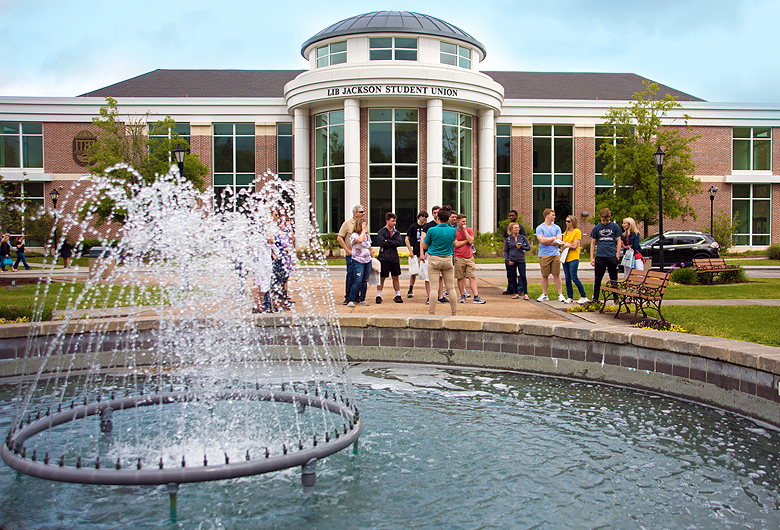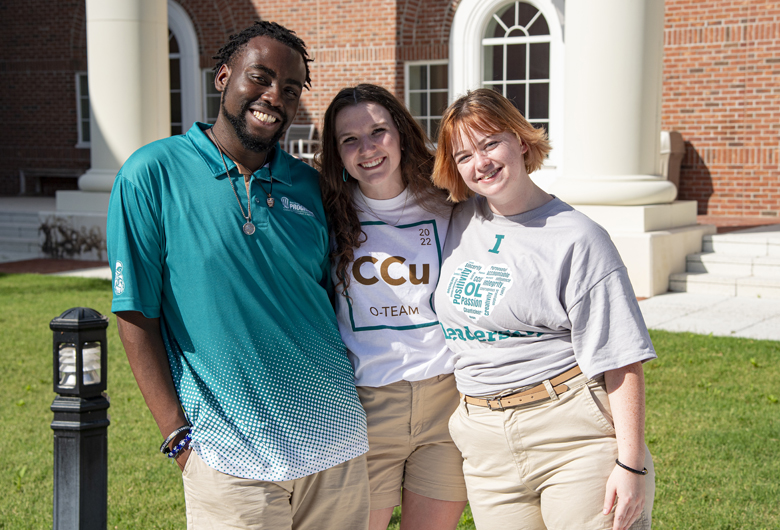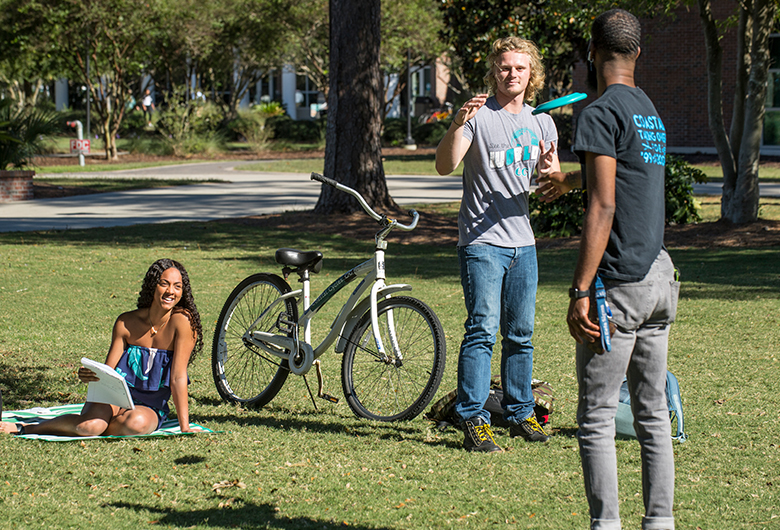World War II photos preserved through the United Bank Center for Military and Veteran Studies
Pictured above
- Gen. Douglas MacArthur, commander of U.S. Army forces in the Pacific Theater of World War II, from a wartime image from the Sedorenko Historical Photograph Collection. CCU’s United Bank Center for Military and Veteran Studies arranged for the collection to be donated and archived at the MacArthur Memorial Museum in Norfolk, Va.
Myrtle Beach resident Nina Sedorenko knew she had a historical treasure in her hands – but she was unsure what to do with it. In her possession were dozens of original photographs from World War II, and some appeared to be related to the Japanese surrender that ended it on Sept. 2, 1945.
A native of New Jersey, Sedorenko was a longtime legal assistant with several New York City law firms and when she retired to the Grand Strand in 1999, she brought her photo collection with her. It was a gift from an elderly acquaintance who collected photographs, and who gave her the wartime images 43 years ago because of her interest in history. She was shocked when she researched the photos and realized their significance.
I knew that I had history in my hands...
– Nina Sedorenko
“I knew that I had history in my hands,” she recalled. “Most people never see original photographs related to a historical event, and here I was holding actual photographs from World War II that included images related to the Japanese surrender that ended it.”
Sedorenko recently began to think about finding some way to place the collection in a permanent archive. That led her to the United Bank Center for Military and Veteran Studies at Coastal Carolina University. Established in 2010, the center focuses on veteran studies and military science, including the on-campus production of a televised oral history program with veterans of the U.S. Armed Forces, which airs daily on HTC and Spectrum cable on the South Carolina Grand Strand. Sedorenko contacted center director and was pleased to learn that the center partners with the Veterans History Project at the Library of Congress, and service branch museums and archives to help preserve oral history, historical documents, and photographs related to American veterans and the U.S. Armed Forces.
“A key part of our mission at the United Bank Center for Military and Veteran Studies is to preserve veterans’ oral history and the images and documents that are associated with their military service,” Gragg said. “One way we try to do that is by facilitating donations of historical material to well-established archival repositories, and we try to match the donated material with the appropriate institution.” Gragg suggested that Sedorenko consider donating her photograph collection to the Douglas MacArthur Memorial Museum in Norfolk, Va. “It was a good choice,” Gragg explained, “because all of the photographs were from the war’s Pacific Theater of Operations and included images of General MacArthur, who commanded U.S. Army forces in the Pacific. Some of the photographs were related to the Japanese surrender, which occurred on the deck of the battleship USS Missouri in Tokyo Bay under MacArthur’s oversight.”
Sedorenko agreed that the Douglas MacArthur Memorial Museum would be a good home for her treasured photographs, and Gragg oversaw the donation on her behalf, which he said was enthusiastically welcomed by the museum staff. Although the museum is noted for its extensive collection of World War II artifacts and images, many of Sedorenko’s images came as a surprise to its staff.
“We have thousands of photographs from World War II, but we had never seen many of the photographs in this collection,” said James Zobel, the senior archivist at the MacArthur Memorial Museum. “They include photos related to the Japanese surrender, photos of General MacArthur, and photos of the Philippines Campaign in which U.S. forces liberated the Philippines from Japanese occupation. Preserving them will add to the historical evidence of that campaign and the surrender that ended World War II.”
Zobel, who has worked with historical images at the museum for 25 years, said that he is especially glad that Sedorenko chose to donate the original images instead of just providing copies. “Her decision to do that allows the originals to be preserved in a permanent collection rather than being lost or destroyed over time. It also makes the original images available to historians and other researchers. So we’re very grateful that the donor chose to preserve those original photographs for the future, and donated them to our collection.”
Zobel said that Sedorenko’s images will be cataloged and numbered with Library of Congress subject headings, then placed in a climate-controlled, acid-free environment within the museum’s secure underground vault in a permanent collection named in her honor.

- Rod O. Gragg, Director
Coastal Science Center 110
843-234-3431
rgragg@coastal.edu - Coastal Carolina University
P.O. Box 261954
Conway, S.C. 29528-6054
According to Zobel, the photographs related to the 1945 Japanese surrender depict members of what is known as the “Manila delegation,” a group of Japanese military officers from the Philippines who were dispatched to Tokyo by the Japanese government to make arrangements for the surrender ceremony. All the photographs appear to have been made by U.S. Army Signal Corps photographers, who were responsible for documenting the Army’s actions in the war. Several of the surrender photographs are mounted on a presentation card, which Zobel believes is one of a small number of souvenirs made for MacArthur’s staff by a Signal Corps photographer – perhaps by Gaetano Fallace, an army photographer whose work depicted some of the most important events of the Pacific war. “It was probably Fallace,” said Zobel. “He was assigned to MacArthur a lot doing 1944 through 1945. He took the famous shot of MacArthur landing on the first day of the Leyte Invasion and the famous images of MacArthur on the balcony of the Manila City Hall just before leaving for Japan and the surrender.”
Knowing that the photographs are safely preserved for the future and can be used for the study of World War II has brought a personal sense of relief for Sedorenko. “That was my goal,” she said. “I realized that there was some monetary value attached to those photos, but the historical value is much, much greater, and I am just so relieved and pleased to see them in a museum related to World War II, General MacArthur and the Americans in uniform who served under him. It’s the perfect place.”
She also said that she is grateful for the assistance she received from CCU’s United Bank Center for Military and Veteran Studies.
I’m so thankful to the University and its veterans center for all of their help. Everything was absolutely wonderful. I knew those valuable photographs could be lost forever – and now they’re safe and preserved for the future.”






